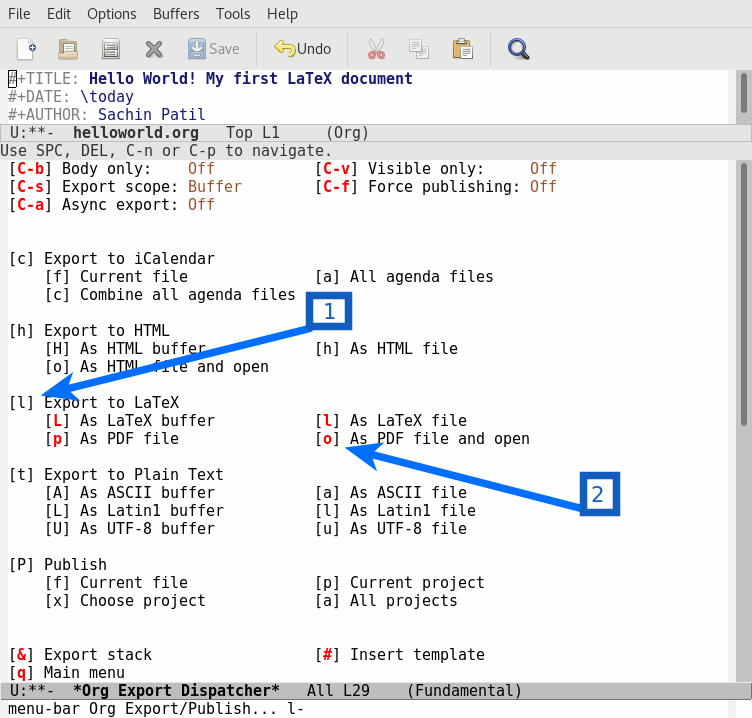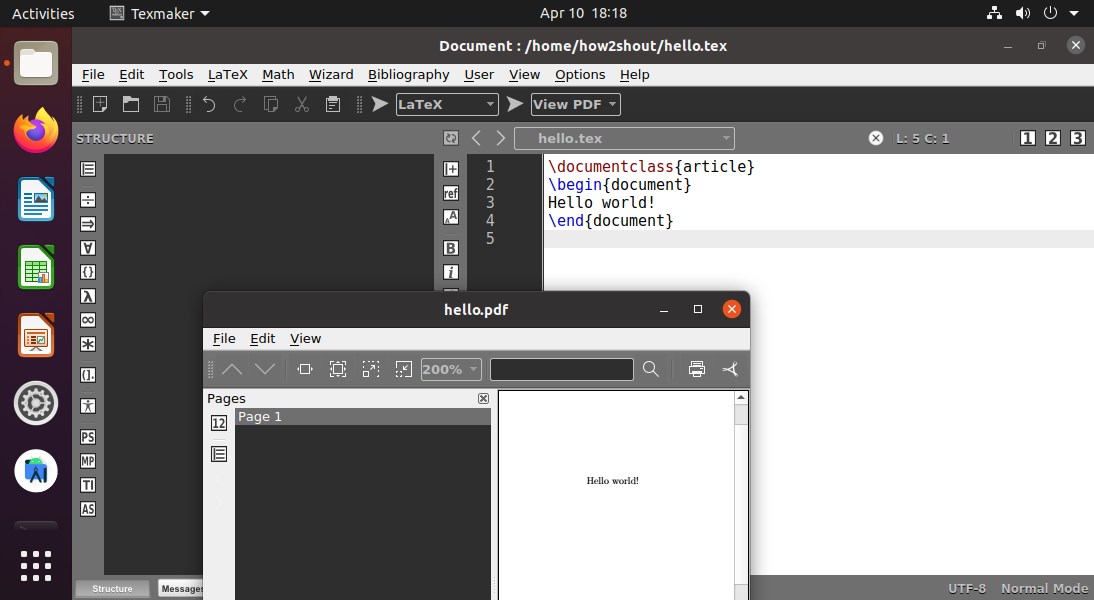
- #Compile latex file command line pdf
- #Compile latex file command line install
- #Compile latex file command line full
- #Compile latex file command line license
- #Compile latex file command line download
Select the search result you want and click 'Goto'. Then type the name of the package you seek into the appropriate field and click 'Find Now'. The option 'Find Package' appears, so click it. This is the file mo.exe in the same directory where you find latex.exe (usually this is C:\texmf\miktex\bin ).Ĭlick on the Packages tab, then right-click the root of the directory tree (usually called 'MikTeX Packages').

Find MikTeX in your Start Menu and select MikTex Options.
#Compile latex file command line install
Once you've been using LaTeX for a while, you may find that you need to install new/additional LaTeX packages. (Note, this requires that you have correctly set the PATH, as described above.)
#Compile latex file command line pdf
The DVI file can easily be converted to PS or PDF formats. This produces several files, including a. Open the command prompt, navigate to the directory containing your file, and type latex to compile the file. Such a list can be found here.įor text editors without LaTeX in mind, you will have to create your LaTeX files in them (making sure to give them a. It's recommended to use a text editor with LaTeX-specific features. The LaTeX compiler will encounter this extra coding and produce strange results. The text you see on screen is much less than the actual text inside the file. These programs "mark up" the text, meaning they have program-specific coding hidden in the file. Warning: do not type up LaTeX documents in word processing programs, such as MS Word. These usually have buttons for common tasks and text highlighting/coloration for LaTeX environments like Math Mode. Multiple entries in the PATH should be separated by semicolons ( ).Īny text editor is sufficient to type up LaTeX documents, however some are specially designed with LaTeX in mind. Scroll down the 'user variables' box until you find "PATH" (you may need to create it?), and add the appropriate directory, probably c:\miktex\texmf\bin\. In Windows XP, go to Control Panel, click on 'System', go to the 'Advanced' tab, click on 'Environment Variables'. You should add the directory containing latex.exe to the PATH. In Windows, the "PATH" is a list of directories which are automatically searches for executable files when you type a command on the command line.
#Compile latex file command line full
Once MikTeX is done installing, it will have created two directories full of many files: the MikTex directory and the texmf directory, the latter of which has all the executable files like latex.exe. (Note: this is pretty much unnecessary with newer versions of MikTeX, if you're always connected to the internet - it downloads any packages you need on the fly, while compiling your tex documents.) If you have the room on your computer and plan to use LaTeX pretty heavily in the future, you might as well do a complete install, rather than having to add packages later. You usually have the choice between a basic install and a full install. Select the version you want to install (probably the newest) and follow the instructions. Go to the MikTex webpage and choose Install MikTex from the left menu bar.
#Compile latex file command line download
Expect it to take about an hour to download and install, even with a fast connection and computer. This is the crucial component of the installation and also the biggest on disk, consisting of more than 300 MB. Users of personal computers should install the Win32 versions of these packages. Download the most current versions of both and install them following the instructions in the self-extracting installation packages. You need to download GhostView, which consists of two parts, GSView and Ghostscript. This step is so that you can create and view postscript (.ps) files.

#Compile latex file command line license
Warning: SPDX license identifier not provided in source file. example.sol?Īdditionally, i also tried solcjs -bin example.sol Is there a more direct command that simply run the sol file without working around it, maybe like solc.

I installed solc using npm install -g solc. Something i'd do for js file like running node example.js in command line. I want to find a simple way to compile a single sol file on local, without using truffle, remix etc.


 0 kommentar(er)
0 kommentar(er)
